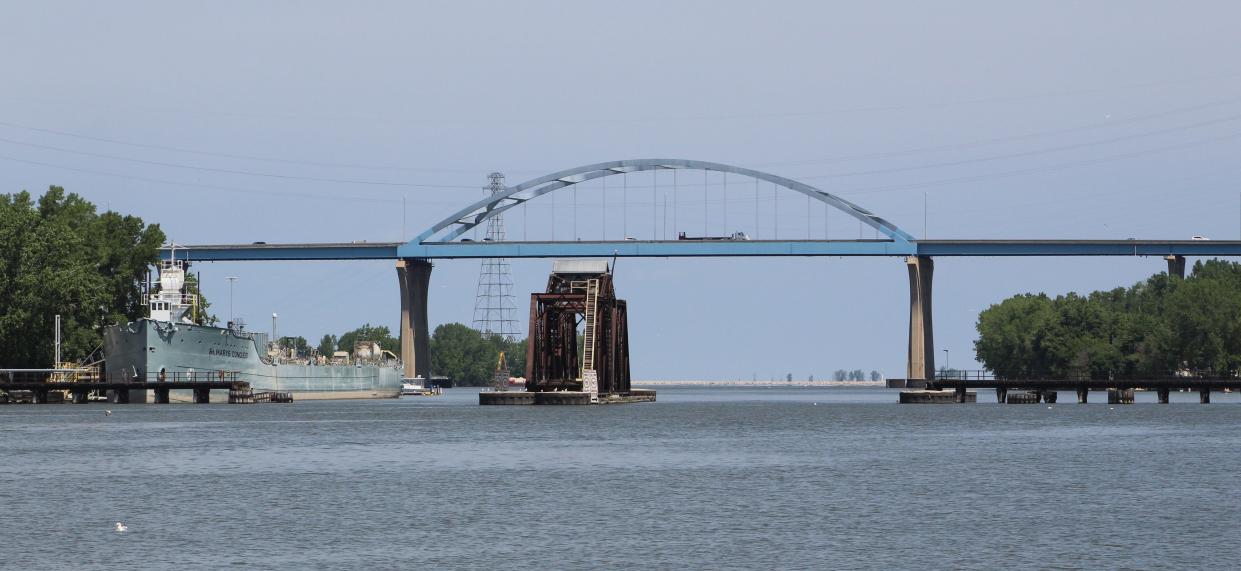Large-scale fish die-off reported in Green Bay and Fox River; cause unknown and DNR seeking public's help

GREEN BAY - The Wisconsin Department of Natural Resources is investigating the cause of a large-scale fish die-off in Green Bay and the Fox River.
Reports of dead fish—mostly channel catfish as well as a few carp and sheepshead—began on June 18. The DNR then began monitoring the situation on June 20.
The majority of dead fish have been found downstream of the De Pere Dam and into the Bay of Green Bay. Some fish, however, have been reported as far north as southern Door County and upstream on the Fox River to the Wrightstown Dam. Why the fish died and where they came from is unknown.
"This is a fairly extensive fish kill. We don't see large fish kills like this that often," said Jason Breeggemann, the DNR's Green Bay area fisheries biologist. "They do sometimes happen, but it's not common."

Hundreds, if not thousands, of fish have died, according to David Boyarski, the DNR's Northeast District fisheries supervisor.
Boyarski said it's a substantial die-off, but likely not as large as the April 2018 fish die-off in Lake Winnebago, which was linked to viral hemorrhagic septicemia (VHS).
RELATED: Months after public concern over chemical spill harming fish, DNR confirms viral killer
Breeggemann said water quality issues or the presence of pathogens like bacteria and viruses are often the culprits in fish die-offs, but more testing is needed to identify the cause of this one.
The DNR has been doing water quality sampling and hasn't noticed anything out of the ordinary, he said. They are also continuing to look for fish samples to submit for pathogen testing since many of the fish already found have been dead too long for testing.
As of Tuesday, Boyarski said, three channel catfish have been sent to Madison for analysis and testing. These tests consist of an external exam, looking for lesions or abnormalities, and an internal exam. Tissue and organ samples are then taken and tested for parasites, bacteria and viruses. The results could take anywhere from a few days to a couple weeks to get back.
Although VHS will be tested for, Boyarski said they don't suspect it as a cause of the current die-off because it's typically a cool-water disease.
What could be the cause then? Boyarski said the DNR was still collecting information and doesn't have a definitive cause, but he noted there were a string of hot days and a large storm in mid-June about the time the first dead fish were reported. This timing coincided with the annual spawning period of channel catfish.
"It's very possible stress related to spawning could be part of (the die-off). Spawning is a stressful period, they put a lot of resources into spawning and they can be vulnerable if hit by additional pressures," Boyarski said. "What that might have been we're still working on."
He added that high water temperatures or low oxygen levels could also have contributed to the die-off.
To get to the bottom of the matter, the DNR is seeking the public's help.
The DNR is asking anyone who sees dying or freshly dead fish, which still have pink gills, to report it with an exact location to Breeggemann. He can be reached by email at jason.breeggemann@wisconsin.gov or by phone at (920) 662-5480.
Those who find dying or freshly dead fish are urged not to handle them.
Contact Kelly Smits at (920) 431-3632 or ksmits@gannett.com. Follow her on Twitter at @kellymsmits.
This article originally appeared on Green Bay Press-Gazette: DNR investigating large-scale fish die-off in Green Bay, Fox River

